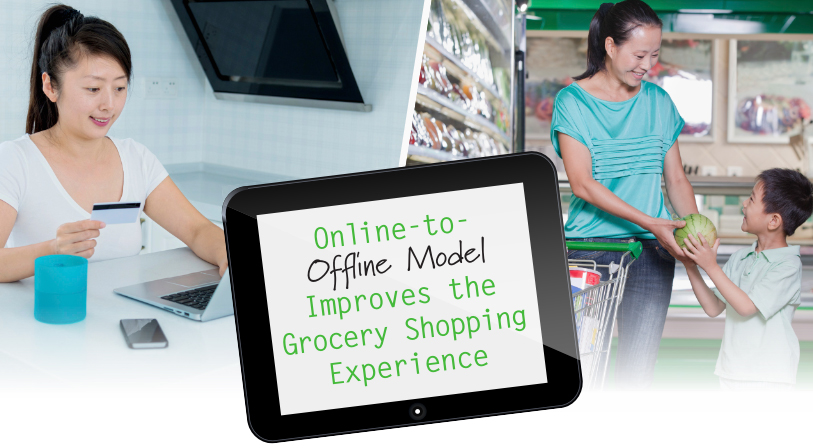
While still up-and-coming in the U.S., online grocery shopping has become widely accepted by many consumers across Asia. For example, according to market research firm Nielsen, 46 percent of consumers in China and nearly 80 percent of those in South Korea have purchased groceries online and had them delivered to their homes—versus only about 13 percent of shoppers in North America.
Still, most consumers aren’t willing to give up the in-store experience entirely. Over 60 percent of global consumers say going to the grocery store is an enjoyable, engaging experience. In response, one Shanghai retailer has developed a new model designed to blend the best of both the online and offline grocery shopping worlds, delivering consumers exactly what they want, when and where they want it.
CeCeLife is a new online-to-offline grocery boutique that offers both online shopping with home delivery or in-store pickup, as well as traditional in-store shopping. “So far, it’s the most comprehensive online-to-offline integration I’ve seen,” says Danny Chen, Vice President of International for Interactions. “They have several small neighborhood-style markets. But the assortment is unlimited because they offer online, too.”
“In the store, you can buy items that are in high demand, such as apples or onions, then you can add more specialty items to be delivered to your home later in the day,” Chen explains. “If they don’t have a particular item in the store, but they do have it in their warehouse, then they offer a QR code price tag that’s RFID-enabled, so you can just bring that to the checkout counter and it generates your receipt. Everything you buy is restaurant quality, and the items cost the same whether you buy them in the store or have them delivered to your home. Essentially the CeCeLife concept is that as long as something is in the warehouse, you can buy it one way or another.”
Chen further explains that there are several benefits in developing this type of online-offline arrangement. “By reducing the assortment you have on hand in the store, you can occupy a smaller footprint and reduce your rent. You can also reduce shopping time, and focus your in-store efforts more on the consumer experience.”
While CeCeLife is the first model of its kind in the grocery environment, Chen expects retailers in the U.S. and other parts of the world may begin to follow suit in the near future. “When you have thousands of SKUs [like most grocery retailers], it’s a challenge to decide what to keep in-store and what to have online. But some of the major retailers around the world are already doing very sophisticated category and assortment analysis right now to determine what has the most value for the customer,” Chen says. He believes this type of analysis could be those retailers’ first steps toward developing a model that truly blends the online and offline worlds and delivers the integrated omnichannel experience that today’s consumers are looking for.
To learn more about Interactions’ global capabilities and insights, contact Danny Chen at hchen@daymon.com.

